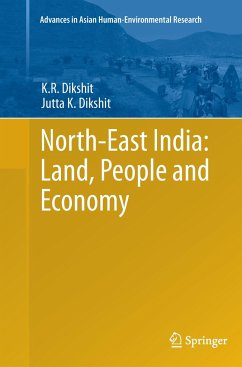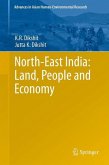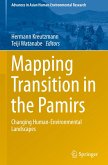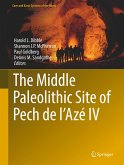North-East India, comprising the seven contiguous states around Assam, the principal state of the region, is a relatively unknown, yet very fascinating region. The forest clad peripheral mountains, home to indigenous peoples like the Nagas, Mizos and the Khasis, the densely populated Brahmaputra valley with its lush green tea gardens and the golden rice fields, the moderately populated hill regions and plateaus, and the sparsely inhabited Himalayas, form a unique mosaic of natural and cultural landscapes and human interactions, with unparalleled diversity. The book provides a glimpse into the region's past and gives a comprehensive picture of its physical environment, people, resources and its economy. The physical environment takes into account not only the structural base of the region, its physical characteristics and natural vegetation but also offers an impression of the region's biodiversity and the measures undertaken to preserve it. The people of the region, especially the indigenous population, inhabiting contrasting environments and speaking a variety of regional and local dialects, have received special attention, bringing into focus the role of migration that has influenced the traditional societies, for centuries. The book acquaints the readers with spatial distribution, life style and culture of the indigenous people, outlining the unique features of each tribe. The economy of the region, depending originally on primitive farming and cottage industries, like silkworm rearing, but now greatly transformed with the emergence of modern industries, power resources and expanding trade, is reviewed based on authentic data and actual field observations. The epilogue, the last chapter in the book, summarizes the authors' perception of the region and its future.
From the reviews:
"The authors originally intended this volume to be a text for college students to introduce them to research on Northeast India. ... It also contains a wealth of statistical data on population, linguistics, migration, ecology, agriculture, and industry. Useful as a college text and as a valuable reference tool for researchers of Northeast India. Summing Up: Recommended. Upper-division undergraduates and above." (P. P. Barua, Choice, Vol. 51 (10), June, 2014)
"The authors originally intended this volume to be a text for college students to introduce them to research on Northeast India. ... It also contains a wealth of statistical data on population, linguistics, migration, ecology, agriculture, and industry. Useful as a college text and as a valuable reference tool for researchers of Northeast India. Summing Up: Recommended. Upper-division undergraduates and above." (P. P. Barua, Choice, Vol. 51 (10), June, 2014)








